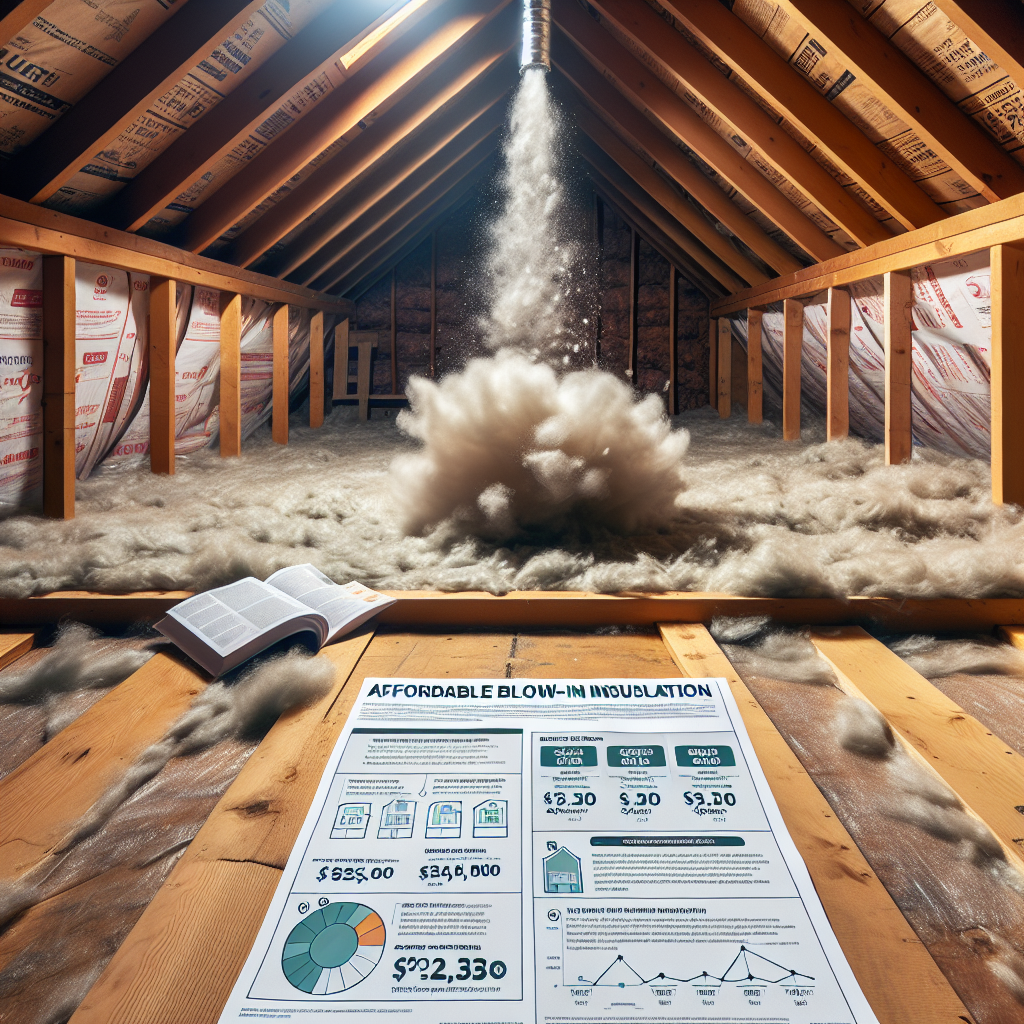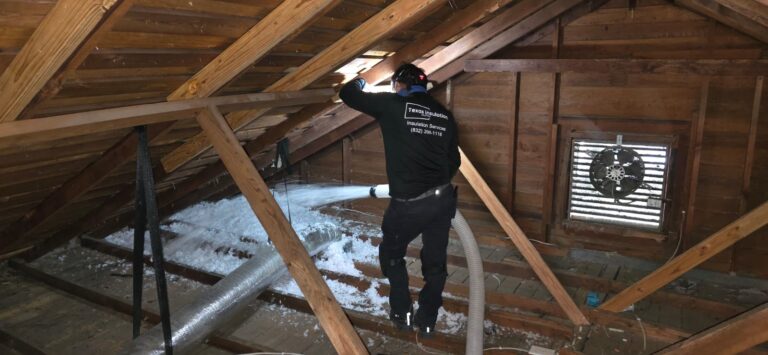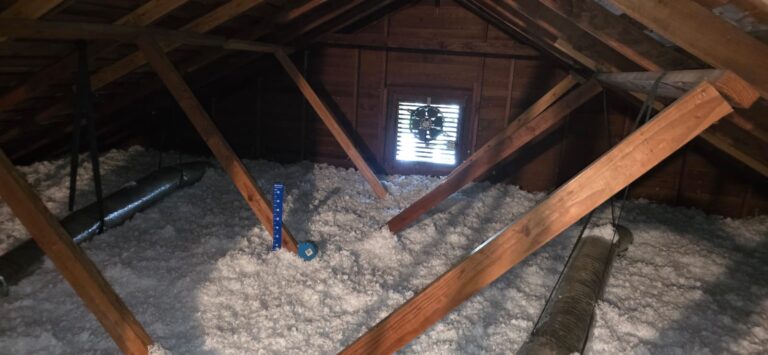-
Table of Contents
“Upgrade your home’s comfort and energy efficiency with blown in insulation over existing walls.”
Introduction
Blown-in insulation is a popular method of insulating existing homes and buildings. It involves using a machine to blow loose insulation material, such as fiberglass or cellulose, into the walls, attic, or other areas of a structure. This type of insulation is often used to improve energy efficiency and reduce heating and cooling costs. In this article, we will discuss the benefits and process of blown-in insulation over existing structures.
Benefits of Blown-In Insulation Over Existing Attic Insulation
Blown-in insulation is a popular method of insulating attics, walls, and other areas of a home. It involves using a machine to blow loose insulation material, such as fiberglass or cellulose, into the desired space. This method has gained popularity in recent years due to its effectiveness and cost-efficiency. One of the most common uses of blown-in insulation is to add an extra layer over existing attic insulation. In this article, we will discuss the benefits of blown-in insulation over existing attic insulation.
First and foremost, blown-in insulation is a great way to improve the overall energy efficiency of a home. Attics are one of the main areas where heat can escape during the winter and enter during the summer. By adding an extra layer of insulation, the home’s heating and cooling systems do not have to work as hard to maintain a comfortable temperature. This can result in significant savings on energy bills, especially in regions with extreme weather conditions.
Moreover, blown-in insulation is an excellent option for homes with existing insulation that has become compressed or damaged over time. Over time, traditional insulation materials, such as fiberglass batts, can lose their effectiveness due to settling or moisture damage. This can create gaps and air leaks, reducing the insulation’s ability to keep the home properly insulated. By adding blown-in insulation over the existing insulation, these gaps can be filled, and the overall R-value (a measure of insulation’s effectiveness) can be increased.
Another benefit of blown-in insulation over existing attic insulation is its ability to provide a more uniform coverage. Traditional insulation materials, such as batts or rolls, can be challenging to install in tight or irregular spaces. This can result in uneven coverage, leaving some areas of the attic with less insulation than others. Blown-in insulation, on the other hand, can be easily blown into even the smallest and most challenging spaces, ensuring a more consistent and thorough coverage.
Furthermore, blown-in insulation is an eco-friendly option for homeowners. The majority of blown-in insulation materials are made from recycled materials, such as shredded newspaper or recycled glass. This not only reduces the amount of waste in landfills but also reduces the need for new materials to be produced. Additionally, blown-in insulation is a more sustainable option as it can be easily removed and reused if needed.
In addition to its energy-saving benefits, blown-in insulation can also improve the overall comfort of a home. By filling in gaps and air leaks, it can reduce drafts and cold spots, making the home more comfortable during the winter months. It can also help reduce noise from outside, creating a quieter and more peaceful living environment.
Lastly, blown-in insulation is a cost-effective option for homeowners. It is relatively easy and quick to install, which can save on labor costs. Additionally, the materials used for blown-in insulation are typically less expensive than traditional insulation materials, making it a more budget-friendly option. Moreover, the energy savings from adding blown-in insulation can result in significant long-term cost savings.
In conclusion, blown-in insulation over existing attic insulation offers numerous benefits for homeowners. It can improve energy efficiency, provide more uniform coverage, be eco-friendly, improve comfort, and be cost-effective. If you are considering adding insulation to your attic, blown-in insulation is definitely worth considering. It is always recommended to consult with a professional insulation contractor to determine the best type and amount of insulation for your home. With blown-in insulation, you can enjoy a more comfortable and energy-efficient home while also reducing your carbon footprint.
Cost Comparison: Blown-In Insulation vs. Traditional Insulation Methods

When it comes to insulating your home, there are many options available in the market. One of the most popular methods is blown-in insulation, which involves using a machine to blow loose insulation material into the walls, attic, or other areas of the house. This method has gained popularity in recent years due to its efficiency and cost-effectiveness. However, many homeowners still wonder if blown-in insulation is a better choice compared to traditional insulation methods. In this article, we will compare the cost of blown-in insulation with traditional insulation methods to help you make an informed decision.
Firstly, let’s understand the difference between blown-in insulation and traditional insulation methods. Traditional insulation methods involve using pre-cut insulation materials such as fiberglass batts or rolls, which are then placed in the walls or attic. This method requires manual labor and can be time-consuming. On the other hand, blown-in insulation is a faster and more efficient method as it involves using a machine to blow loose insulation material into the desired area. This method is also known as loose-fill insulation.
Now, let’s dive into the cost comparison between these two methods. The cost of insulation depends on various factors such as the size of your home, the type of insulation material used, and the labor cost. However, on average, blown-in insulation is cheaper than traditional insulation methods. This is because blown-in insulation requires less labor and can be completed in a shorter amount of time. With traditional insulation methods, the labor cost can significantly increase the overall cost of the project.
Moreover, blown-in insulation is a more cost-effective option in the long run. This is because it provides better insulation and can help reduce your energy bills. The loose-fill insulation material used in blown-in insulation has a higher R-value (a measure of insulation’s effectiveness) compared to traditional insulation materials. This means that blown-in insulation can provide better thermal resistance, keeping your home warmer in the winter and cooler in the summer. As a result, you will end up using less energy to heat or cool your home, leading to lower energy bills.
Another factor to consider when comparing the cost of blown-in insulation and traditional insulation methods is the installation process. As mentioned earlier, blown-in insulation is a faster and more efficient method, which means that the installation process can be completed in a shorter amount of time. This can save you money on labor costs, especially if you are hiring a professional contractor to do the job. On the other hand, traditional insulation methods can take longer to install, which can increase the labor cost.
Furthermore, blown-in insulation can also save you money on repairs and maintenance. Traditional insulation methods, such as fiberglass batts, can settle over time, leading to gaps and spaces in the insulation. This can reduce the effectiveness of the insulation and require frequent repairs or replacements. On the other hand, blown-in insulation does not settle, providing long-term insulation without the need for maintenance or repairs.
In conclusion, when it comes to cost comparison, blown-in insulation is a more cost-effective option compared to traditional insulation methods. It is cheaper to install, provides better insulation, and can save you money on energy bills, labor costs, and maintenance. However, it is essential to consider other factors such as the type of insulation material used and the size of your home before making a decision. It is always recommended to consult a professional contractor to determine the best insulation method for your home.
Factors Affecting the Price of Blown-In Attic Insulation
Blown-in insulation is a popular choice for homeowners looking to improve the energy efficiency of their homes. It involves using a machine to blow loose insulation material, such as fiberglass or cellulose, into the attic space. This method is often preferred over traditional batt insulation because it can easily fill in gaps and hard-to-reach areas, providing better coverage and higher R-value (a measure of insulation’s ability to resist heat flow). However, the cost of blown-in insulation can vary greatly depending on several factors.
One of the main factors that affect the price of blown-in attic insulation is the type of material used. Fiberglass insulation is typically the most affordable option, with an average cost of $0.50 to $1.50 per square foot. On the other hand, cellulose insulation, which is made from recycled paper and treated with fire retardants, can cost between $1.00 and $3.00 per square foot. While cellulose may be more expensive, it has a higher R-value and is considered more environmentally friendly.
Another factor that can impact the cost of blown-in insulation is the size of the attic. The larger the space, the more material will be needed, resulting in a higher cost. Additionally, if the attic has a complex layout with many obstructions, such as pipes or ductwork, it may require more time and effort to properly install the insulation, which can also increase the overall cost.
The condition of the existing insulation in the attic can also affect the price of blown-in insulation. If there is already some insulation present, it may need to be removed before the new insulation can be installed. This can add to the labor costs and increase the overall price. However, if the existing insulation is in good condition, it may be possible to simply add blown-in insulation on top of it, which can save time and money.
The accessibility of the attic can also impact the cost of blown-in insulation. If the attic is easily accessible with a standard ladder, the installation process will be relatively straightforward and may not require any additional equipment. However, if the attic is difficult to access, such as through a small hatch or crawl space, special equipment may be needed, which can increase the cost of the project.
The location of the home can also play a role in the price of blown-in insulation. In areas with higher labor and material costs, such as large cities, the overall cost of the project may be higher. Additionally, homes in colder climates may require thicker insulation, which can also increase the cost.
The experience and expertise of the insulation contractor can also affect the price of blown-in insulation. It is important to choose a reputable and experienced contractor who is knowledgeable about the different types of insulation and can properly install it. While hiring a more experienced contractor may cost more upfront, it can save money in the long run by ensuring the insulation is installed correctly and effectively.
In conclusion, there are several factors that can affect the price of blown-in attic insulation. These include the type of material used, the size and condition of the attic, the accessibility of the space, the location of the home, and the experience of the contractor. It is important for homeowners to consider these factors when budgeting for blown-in insulation and to get quotes from multiple contractors to ensure they are getting a fair price. By understanding these factors, homeowners can make informed decisions about their insulation needs and ultimately improve the energy efficiency and comfort of their homes.
Q&A
Q: What is blown in insulation?
A: Blown in insulation is a type of insulation material that is installed by blowing it into an existing space, such as an attic or wall cavity.
Q: How is blown in insulation installed over existing insulation?
A: Blown in insulation can be installed over existing insulation by using a special machine to blow the insulation material on top of the existing insulation, filling in any gaps or voids.
Q: What are the benefits of adding blown in insulation over existing insulation?
A: Adding blown in insulation over existing insulation can help improve the overall energy efficiency of a home, reduce heating and cooling costs, and provide better soundproofing. It can also help to fill in any gaps or voids in the existing insulation, creating a more consistent and effective barrier against heat transfer.
Conclusion
insulation
In conclusion, blown in insulation can be a cost-effective and efficient way to improve the insulation of a home that already has existing insulation. It can fill in any gaps or voids in the current insulation, providing better coverage and reducing energy loss. Additionally, blown in insulation can also help to improve the overall energy efficiency of a home, leading to potential cost savings on heating and cooling bills. However, it is important to consult with a professional to ensure proper installation and to determine the best type and amount of insulation for your specific home. Overall, blown in insulation can be a valuable addition to existing insulation and can help to create a more comfortable and energy-efficient living space.






